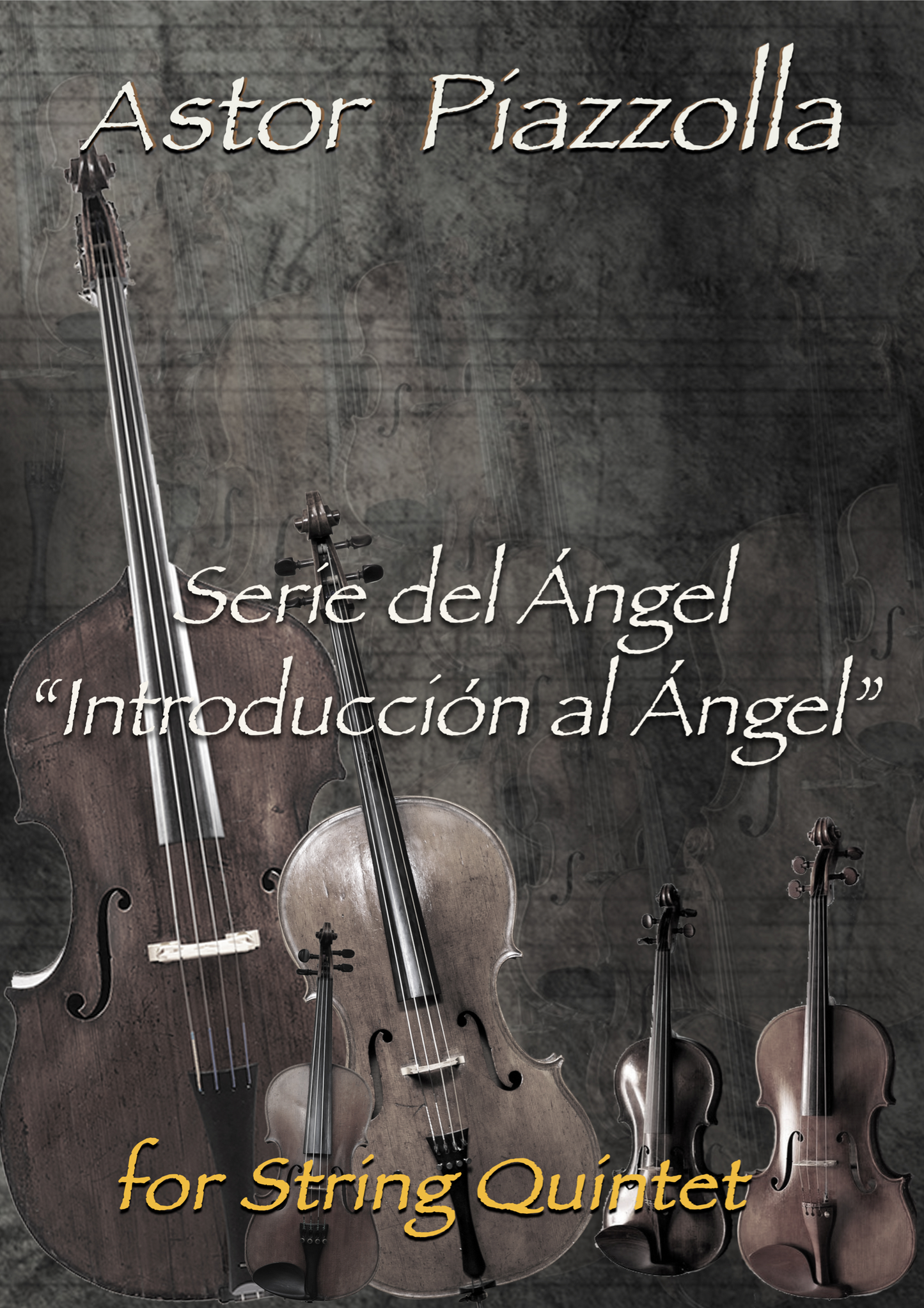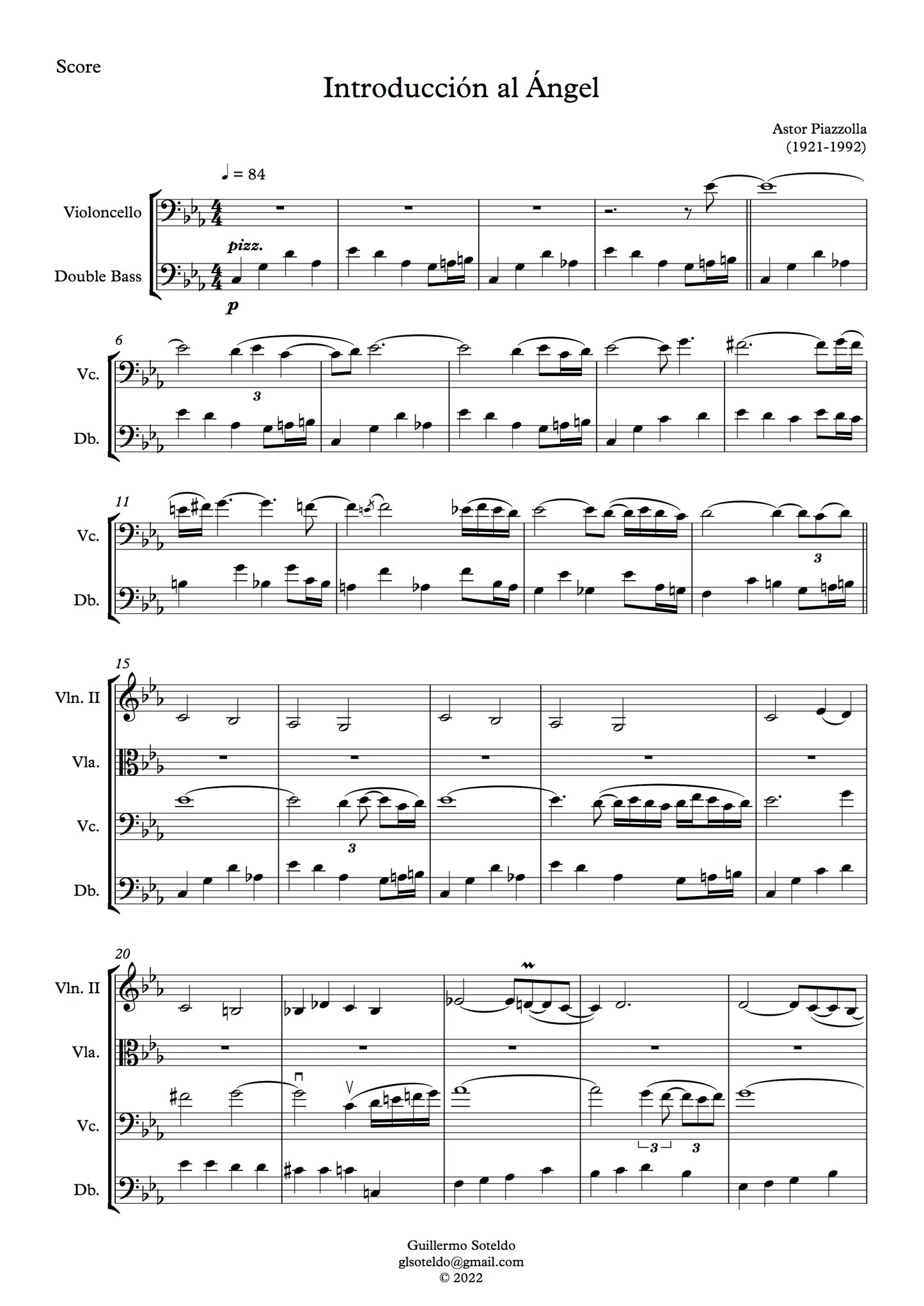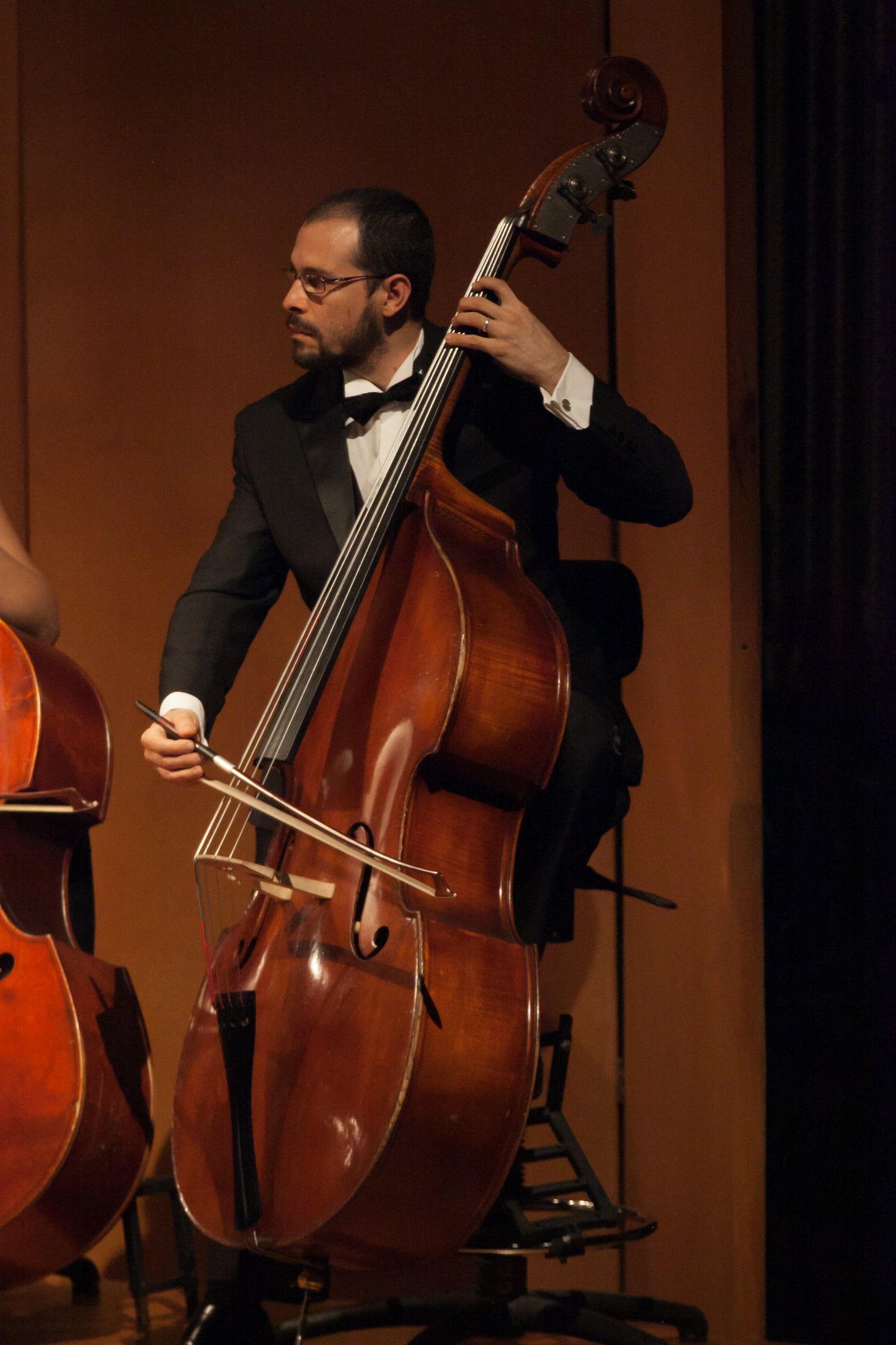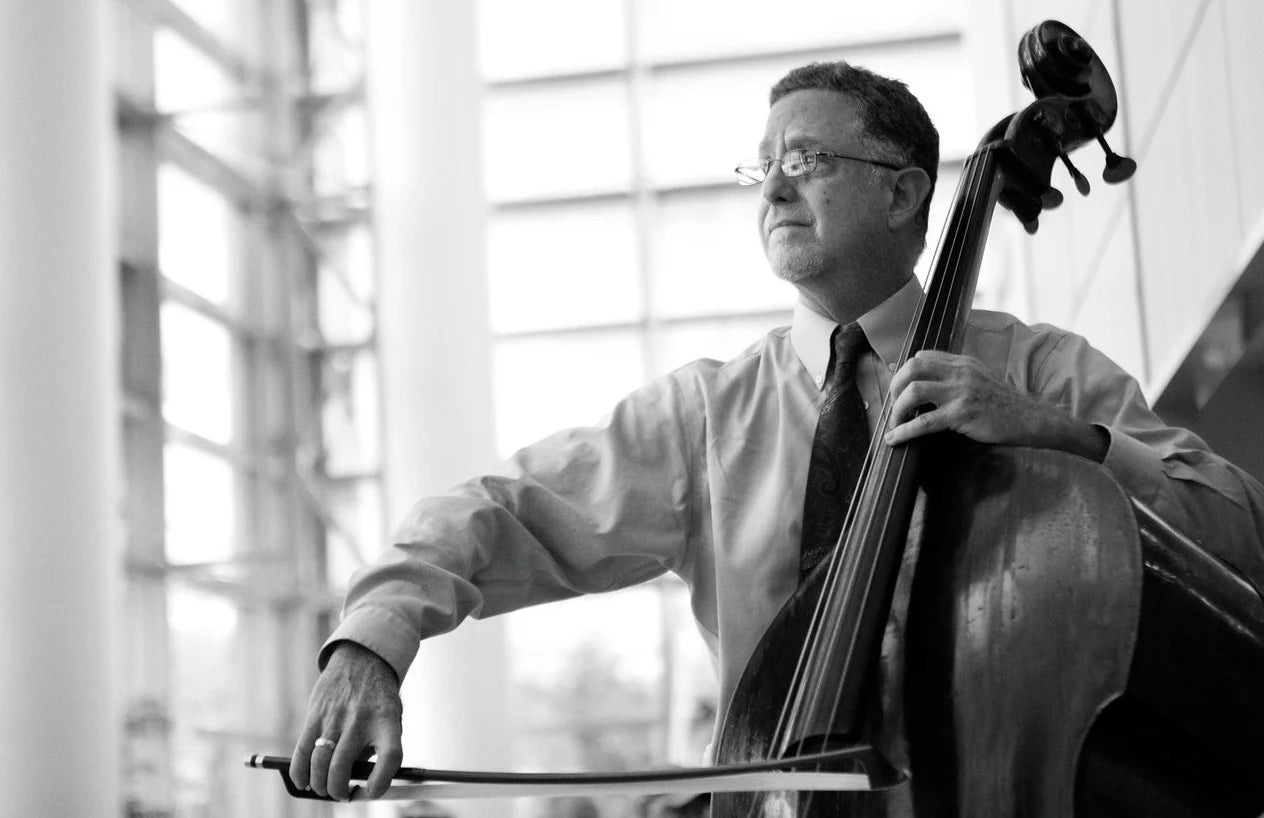Guillermo Soteldo
Piazzolla: Introducción al Ángel for string quintet (Soteldo)
Piazzolla: Introducción al Ángel for string quintet (Soteldo)
Couldn't load pickup availability
About the Composition
“Introducción al Ángel” is a work recorded for the first time in the LP “Nuestro Tiempo” by CBS Argentina in 1962. The theme appeared in the posthumous CD “Introducción al Ángel Vol. 1” 1991, which collected three concerts in the Auditorium of the Municipal Radio of Buenos Aires on July 27, August 24, and September 7, 1963. Those are the oldest concerts recorded of Piazzolla and his quintet.
Introducción al Ángel (Introduction to the Angel), Milonga del Ángel (Dance of the Angel), La Muerte del Ángel (Death of the Angel) and Resurrección del Ángel (Resurrection of the Angel) conform the Series of the Angel or Suite of the Angel, the introduction and death were used in or written for Alberto Rodríguez Muñoz’s play “Tango del Ángel” in 1962 and the milonga and resurrection composed in 1965, that were part of the LP “Concierto de Tango en el Philharmonic Hall de New York”.
There is a work called Tango del Ángel, which is part of the LP –“TANGO EN HI-FI / ASTOR PIAZZOLLA, su Bandoneón y su Orquesta de Cuerdas”– recorded in 1957 in RCA studios B.A. After some study in Paris, Piazzolla returned to Argentina in 1955 and founded two parallel projects, his Strings Orchestra and the Buenos Aires Octet. \
Piazzolla, the murderer of tango?
"Yes, it is true, I am an enemy of tango, but of tango, as they understand it. They still trusting in the "Compadrito". I do not. They believe in the lantern. I don't. If everything has changed, the music of Buenos Aires must also change. Many of us want to change tango, but these gentlemen who attack me do not understand it and will never understand it. I'm going to keep going, despite them.'' -Piazzolla
Astor Piazzolla was attacked for anything he did that was not traditional, including his preference to play the bandoneon standing rather than sitting. One of the tangos he wrote during this pioneering period was Tango del Ángel. This is not part of this suite but perhaps was the reasoning piece Rodríguez Munóz asked Piazzolla to compose the pieces to his play.







